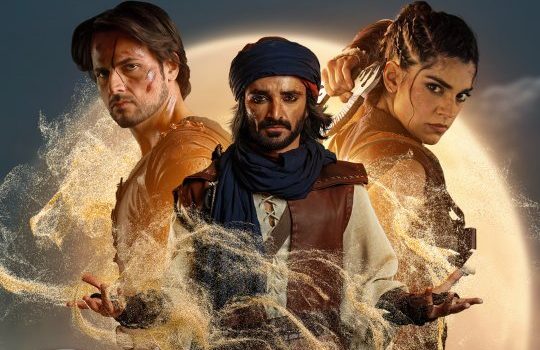“UmroAyyar” – A term that brings back nostalgic memories, especially for 90s kids who grew up listening to captivating tales of this fascinating character. Ayyar, derived from Persian, signifies someone who is cunning, clever, deceitful, and a master of trickery.
Upon hearing the name of Pakistan’s latest release, “UmroAyyar: A New Beginning,” we instantly think of Umro’s Magical Cap and Zanbeel from our childhood tales. However, the film doesn’t feature these iconic elements. Instead,
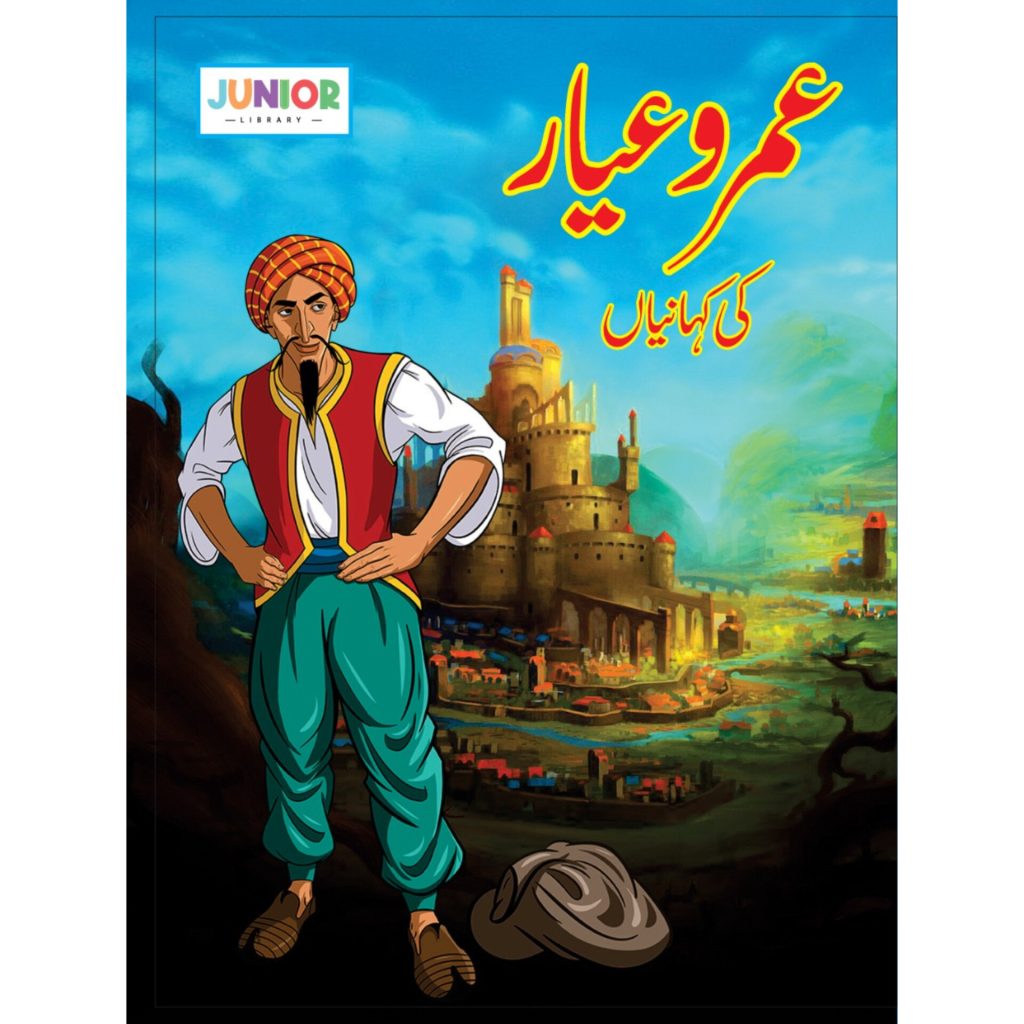
The term “UmroAyyar” is used to connect Usman Mukhtar’s character, Amar, with the legacy of the cunning UmroAyyar.
This connection isn’t fully explored in this installment, but hints throughout the film suggest that future parts may delve deeper into this fantasy.
The makers:
The film “UmroAyyar” is directed by Azfar Jafri, a prominent figure in the Pakistan Film Industry since his directorial debut with the 2013 film “Siyaah.” This marks his sixth film, following “Siyaah,” “Janaan,” “Parchi,” “Sher Dil,” and “Heer Maan Ja.” UmroAyyar is Produced by Huma Jamil Babar.
The film is written by Atif Rehan Siddiqui, who, apart from working on the unreleased Hamza Ali Abbasi film “Kambakht” and writing songs for the animated franchise “Allahyar,” has limited experience in feature film writing. This inexperience is evident in the screenplay and storytelling of “UmroAyyar,” which we will discuss in detail.
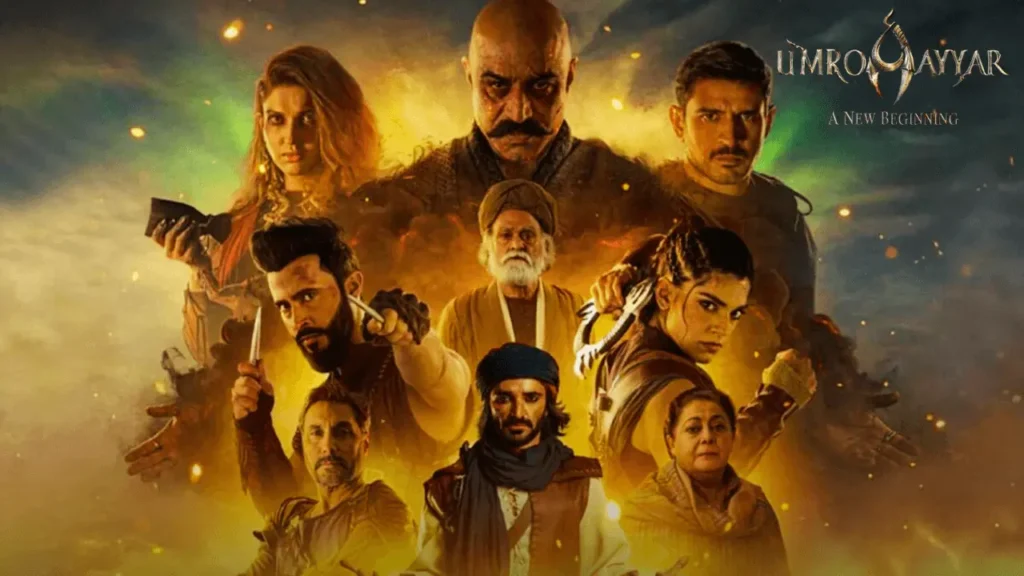
One of the film’s highlights is its excellent cinematography by Riki Butland, who has worked on films like “Fast & Furious 7” (in the Camera & Electrical department) and the Bollywood film “Tezz,” starring Ajay Devgan and few other works too.
VR Chilli: The Rise of a giant production house in Pakistan
VR Chilli, based in Islamabad, has quickly become a major force in the Pakistani film industry. With their first major production, “UmroAyyar,” and many more projects in the pipeline, this production house is poised to elevate Pakistani cinema to international heights. Just like “The Legend of Maula Jatt,” which achieved great success both overseas and domestically, VR Chilli’s big-budget films hold the promise of putting Pakistani movies on the global map.

The Cast & Plot:

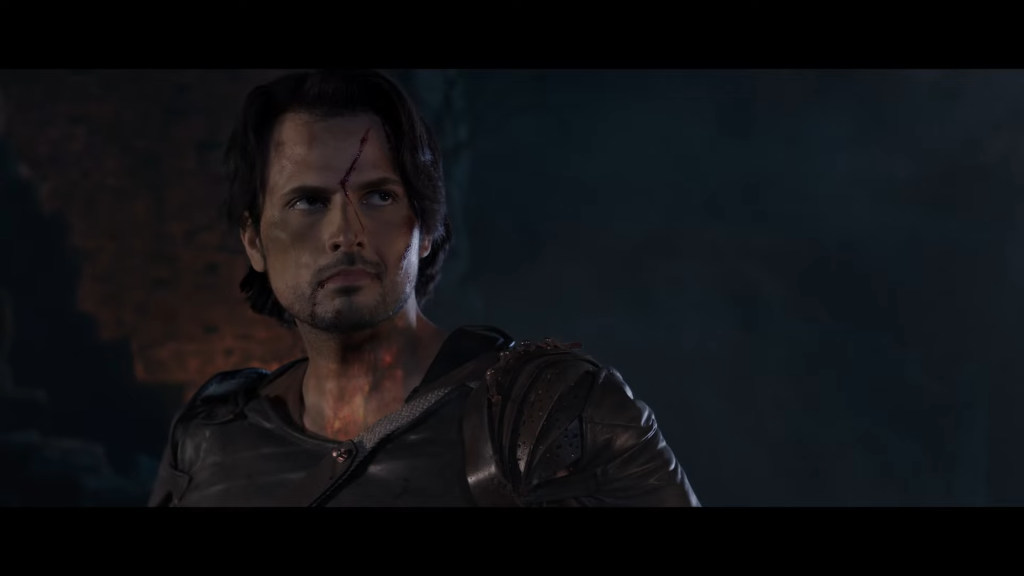
The film begins with Laqqa, portrayed by Faran Tahir, who possesses dark powers by controlling Jinns and demons. He seeks to dominate the world by sacrificing the blood of an Ayyar during a lunar eclipse. Usman Mukhtar plays Amar, a college science professor unaware of the hidden powers and legacy passed down from his father, played by Adnan Siddiqui.

Sana Fakhar also stars as Cheeno Bai, a witch in Laqqa’s gang, who follows his orders to eliminate all Ayyars and his adversaries. Usman Mukhtar’s character, Amar, is a skeptic who doesn’t believe in Jinns and witches until he is attacked by dark forces on his way back from his job as a college professor. He starts experiencing strange phenomena and sensing something within him. Amid these events, Laqqa’s army attacks him, but he is ultimately rescued by the Ayyars’ leader Maaz (played by Ali Kazmi), Meena (played by Sanam Saeed), and other Ayyars, who take him to one of their camps for safety.

After being convinced by Sanam Saeed’s character, Amar agrees to join the Ayyars since Laqqa’s gang is pursuing him and his life is in danger. They take him to their hidden headquarters, where he meets Manzar Sehbai’s character, the Ayyar’s Guru. At this secret base, all the Ayyars are training and monitoring Laqqa’s plans and evil deeds. Amar is trained to lead the Ayyars and prepares his team to confront Laqqa. The journey is filled with numerous incidents, leading to a final showdown where Amar faces Laqqa, counters his army, and stops him from gaining ultimate power and controlling the world.
Performances:
Although the film doesn’t feature a multitude of big names, lead actors Usman Mukhtar, Faran Tahir, Sanam Saeed, and Ali Kazmi carry the story. Sana Fakhar’s portrayal of Cheeno Bai is striking but doesn’t significantly impact the main plot. Manzar Sehbai shines as the Ayyars’ Guru, and Danial Raheel is commendable in his scenes. The supporting cast includes Salmaan Shaukat, who also had a cameo in “The Legend of Maula Jatt” and plays a significant role here but fails to leave a lasting impression, along with the less convincing performances of Uloomi Karim and Usama Karamat.
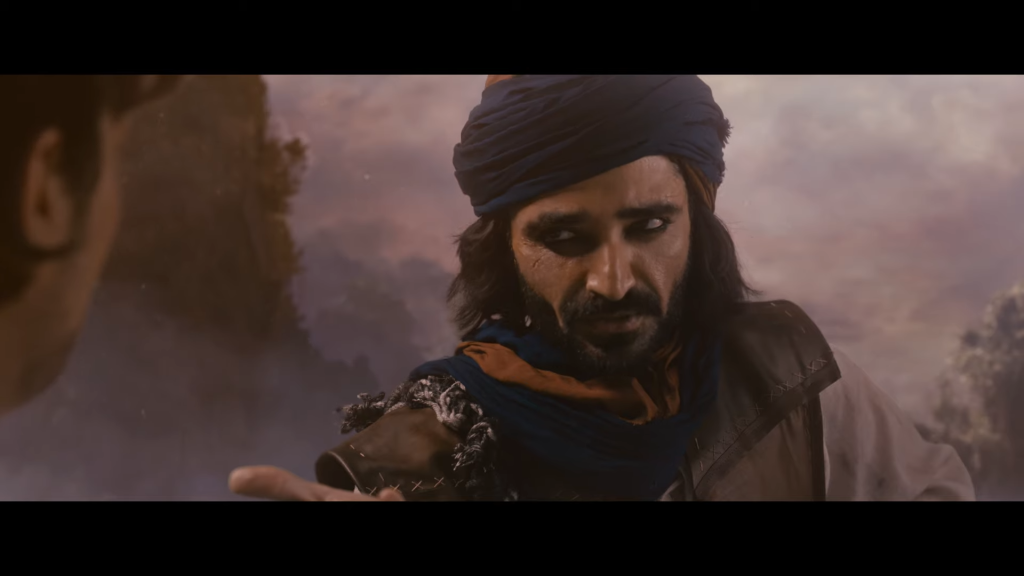
The most overwhelming surprise in the film is Hamza Ali Abbasi’s entrance, where he mentors and empowers Amar (Usman Mukhtar). His brilliant screen presence and acting remind us why he is one of Pakistan’s top actors, instantly elevating the film. Adnan Siddiqui’s short appearance as Amar’s father is also noteworthy.
One of the most commendable aspects of “UmroAyyar” is that all the actors delivered impressive performances in their action sequences, which significantly enhanced their portrayals.
Production:
“UmroAyyar: A New Beginning” stands as the most expensive film ever made in Pakistan to date. One of the film’s biggest strengths is its remarkable production values, featuring lavish sets and fantastical worlds of the Ayyars and Laqqa. The beautiful costumes elevate the film’s aesthetic, but the standout feature is the top-tier VFX and CGI, all crafted by Jubilant Studio in Pakistan, achieving an international standard of visual effects.
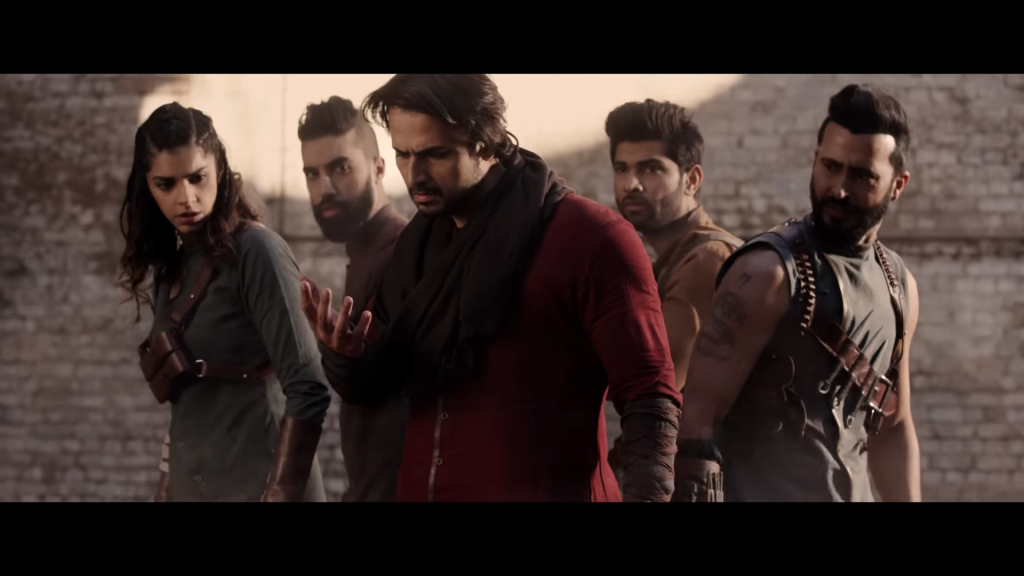
However, certain aspects, like the sets and lighting, could have been better. Some scenes appeared low-budget, such as the overly dark Laqqa’s clan, which obscured the set and background, failing to convey the grand and majestic feel expected from Faran Tahir’s character.

Additionally, the depiction of Koh-e-Kaf during Hamza Ali Abbasi’s special appearance looked somewhat fake and could have been enhanced to match the fantasy worlds seen in Hollywood films like “Avatar,” especially since it only needed to serve as a background. A one to one conversation between Sanam Saeed and Usman Mukhtar seemed to be surrounded with unreal visuals in the background that could have been more realistic.
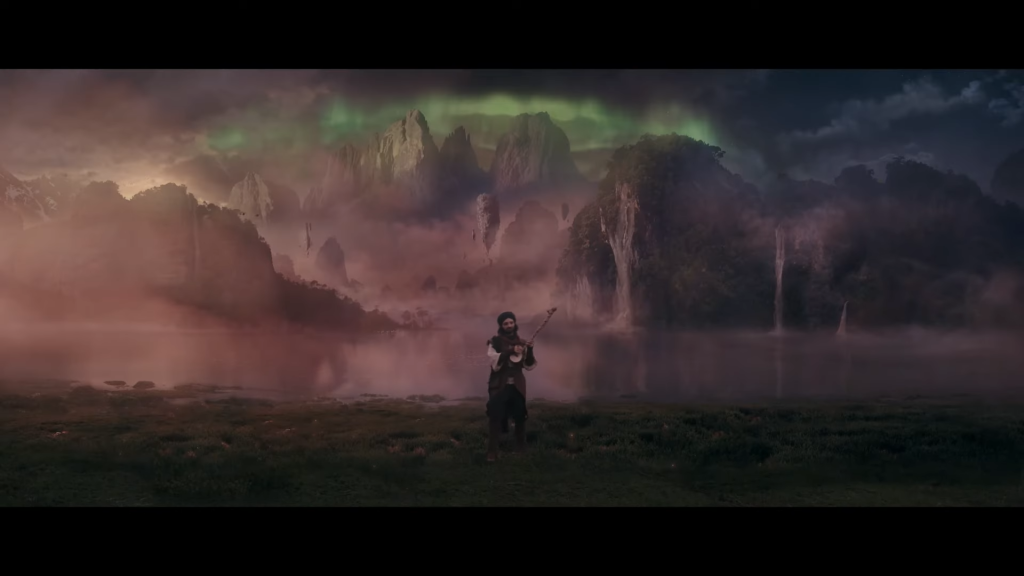
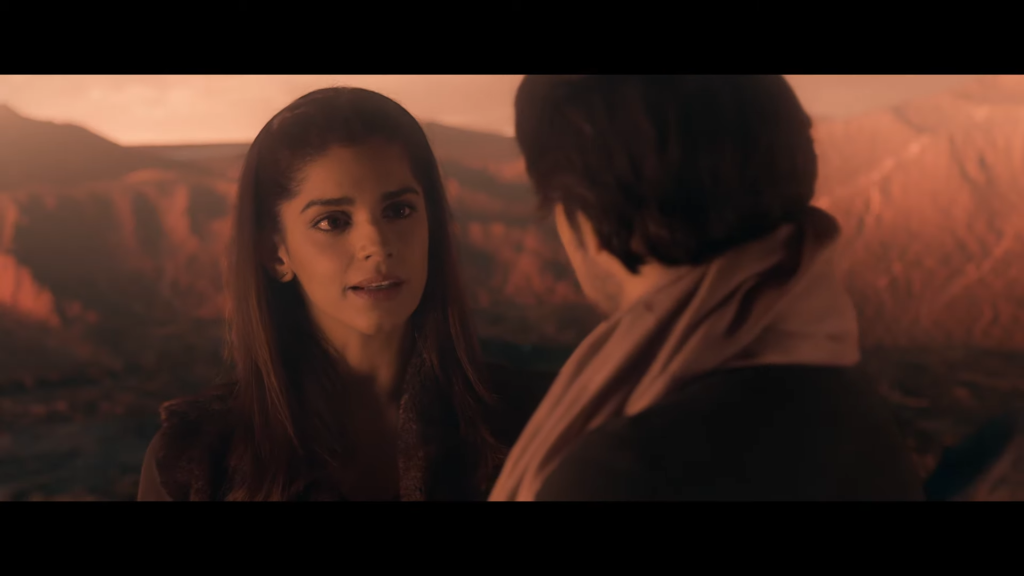
Writing, Screenplay & Dialogues:
UmroAyyar’s storyline follows a conventional pattern seen in fantasy and superhero films, where evil powers attempt to dominate the world, countered by a hero who strives to thwart the supervillain using their own abilities. The key to engaging the audience lies in the screenplay, which should ideally keep viewers captivated and immersed throughout the movie. In UmroAyyar, however, this aspect could have been more polished and detailed, as many elements of the plot remained unexplained and obscure.
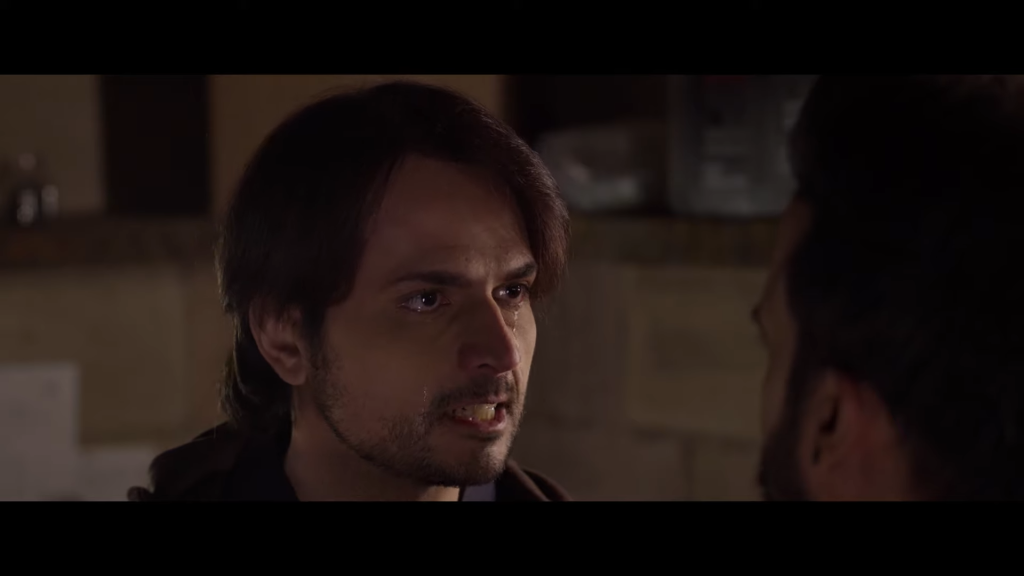
The characterization of the main leads, such as Faran Tahir as Laqqa and Usman Mukhtar as Amar, was swiftly introduced, thrusting them into action immediately. The story could have benefitted from a deeper exploration of the dynamic between Amar and Laqqa, rather than predominantly focusing on the Ayyars gang’s attempts to evade Laqqa’s pursuit. This imbalance failed to generate the excitement expected from such a narrative, with the Ayyars often portrayed as constantly on the defensive.
Moreover, numerous scenes involving the supporting cast felt drawn-out and lacked the necessary momentum. Amar’s transformation from a science professor to the superhero leader of the Ayyars lacked emotional depth, instead opting for a more lighthearted approach that bordered on being comedic. This approach may not have resonated well with viewers seeking a more immersive and emotionally resonant journey.

The dialogues, often regarded as the heart of a film, were sparse in “UmroAyyar.” Except for Ali Kazmi’s brief monologue rallying the Ayyars with “Ayyaro, Tayaaarr hooooo,” there were few memorable instances. The conversation between Usman Mukhtar and Hamza Ali Abbasi was a standout moment, injecting intrigue into the film. Mukhtar’s dialogue upon returning to the Ayyars’ headquarters to confront Laqqa’s schemes showed genuine intent and added depth to his character.
Direction:
Azfar Jafri’s ambition in creating a grand fantasy film like “UmroAyyar” is something to celebrate. While the story introduced in the film feels connected to potential future installments, many aspects remain unexplained. These include Laqqa’s origins of his dark powers, past encounters with the Ayyars, Adnan Siddiqui’s character, and the enigmatic role of Hamza Ali Abbasi, which intrigued fans and promises to be explored in upcoming sequels or possibly prequels of “UmroAyyar.” These unresolved elements contributed to a somewhat incomplete narrative that struggled to emotionally engage the audience. The duration of the film could have been further prolonged to give more depth to the lead characters and cameos.
However, the cinematography and color grading work in the film stands out as one of Azfar Jafri’s finest achievements. The team’s ability to depict the story convincingly on screen is praiseworthy and underscores the director’s skill and dedication.
Final Words:
Creating a film like “UmroAyyar,” a beloved childhood character, marks a significant milestone for Pakistani Cinema. This achievement raises the bar and contributes positively to the industry. Much like how Bollywood’s film production company Red Chillies elevated standards with top-notch VFX in movies such as “Ra. One”, “Fan “,”Zero ” and others, VR Chilli has similarly pushed boundaries in Pakistani cinema. They have delivered international-standard VFX in “UmroAyyar,” showcasing the potential of Pakistani films on global platforms. This achievement opens doors for collaborations with VR Chilli and Jubilant Studio, offering opportunities to enhance visual effects and CGI capabilities for future projects in the Pakistan Film Industry.
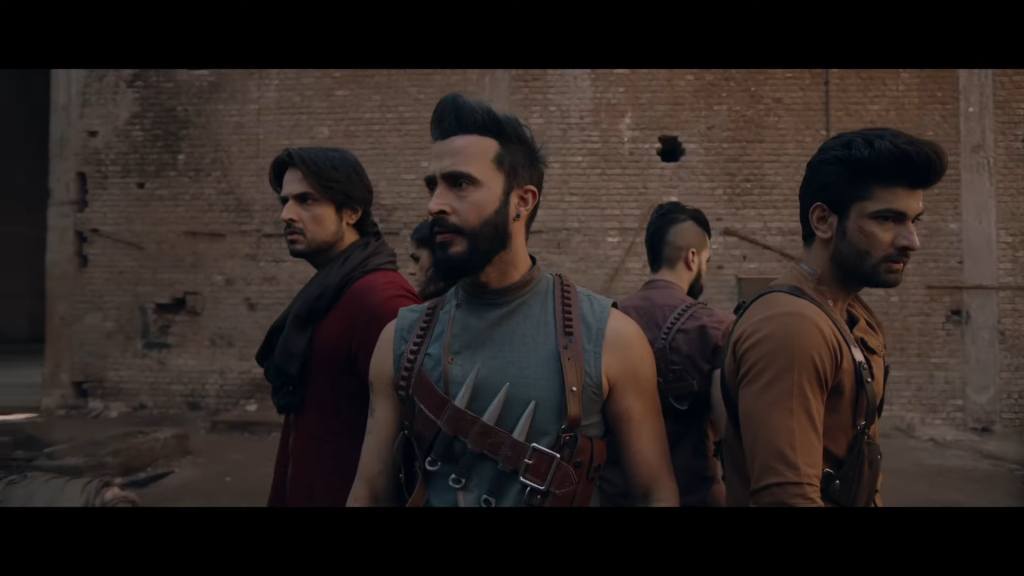
Watch it or not?
As a fan of Pakistani cinema and someone drawn to the fantasy genre, “UmroAyyar” is a must-watch to witness the remarkable craftsmanship that showcases the true potential of Pakistani cinema. It offers the opportunity to see beloved stars in captivating fantasy roles. However, if you are specifically expecting a faithful adaptation of your favorite character UmroAyyar, it may be worth reconsidering your expectations before watching the film.

